TW Interview by William Gray
A Graphic Novelist Who Tackles Big Questions
When I tell people I’m interviewing an author, Gene Yang is one of the few names they immediately recognize. Young adult readers and other fans know his work on the Avatar: The Last Airbender comics or his own books such as American Born Chinese, which won the 2007 Printz Award and was a National Book Award finalist.

In 2010, I interviewed Yang for Talking Writing, when he was still teaching high school math and programming in Oakland, California. This summer and four books later (not to mention nine volumes of Avatar), I caught up with Yang again by phone for a second thoroughly engaging conversation. I picked his brain about what constitutes a YA novel—and what drives him to keep asking hard questions about life, community, and who we all are in comic form.
He’ll be embarking on a book tour this fall for Secret Coders (illustrated by Mike Holmes) from his publisher, First Second Books. Yang now teaches in a low-residency master’s program at Hamline University, where in 2012 he began an adjunct professorship in children's and young adult writing. But when we talked in July, he’d just left his other part-time position as a high school teacher a few weeks before and told me he was “unexpectedly emotional” about it:
I felt like I was breaking up with someone. I was there for seventeen years—most of the students I was teaching weren’t alive when I started…. I want to end my working life as a teacher and don’t imagine myself staying out of the classroom for long.
Gene Luen Yang grew up Catholic in a Chinese-American household in the Bay Area, and his faith as well as his ethnic heritage figures in his stories for teens. He says including difficult topics in his writing forces him to find answers that matter to him. This even extends to seemingly non-kid friendly topics like China’s Boxer Rebellion at the turn of the twentieth century and the Catholic missionaries who were killed during it and later canonized.
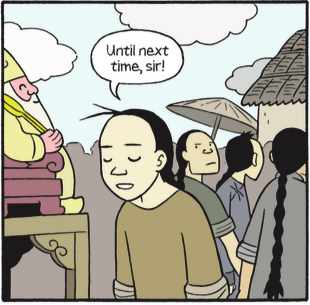 His ability to weave a narrative that keeps readers smiling—as with the interfering mother in his 2014 story The Shadow Hero—or wincing—as with the cultural divide depicted in his 2013 two-volume Boxers and Saints—brings me back to his work more often than other young adult novelists.
His ability to weave a narrative that keeps readers smiling—as with the interfering mother in his 2014 story The Shadow Hero—or wincing—as with the cultural divide depicted in his 2013 two-volume Boxers and Saints—brings me back to his work more often than other young adult novelists.
Yang is one of the few graphic novelists I read frequently, but I'm an avid consumer of YA literature. My favorite author as a teenager was Tamora Pierce, and last year I reread her full body of work with no less ardor than when I first picked up Wild Magic as a twelve-year-old. Alanna, Daine, Ozorne, and Numair remain long-lost friends. Yet as an adult professional in Washington, D.C., there's something distinctly uncomfortable about carrying around YA books on the Metro. I can speak unabashedly about my love of Legos and board games, but my discomfort about being seen as a YA fan speaks to how deep such stories go in terms of personal identity.
Like Gene Yang, I struggle with finding answers to big questions, no matter how many communities I'm a part of. I always have another question, because I'm afraid of the answers or judgment from others—aren't we all? Hell, we're all works in progress, and I hope this interview helps TW readers look at literature and what they choose to read a little differently.
This TW interview has been condensed and edited.
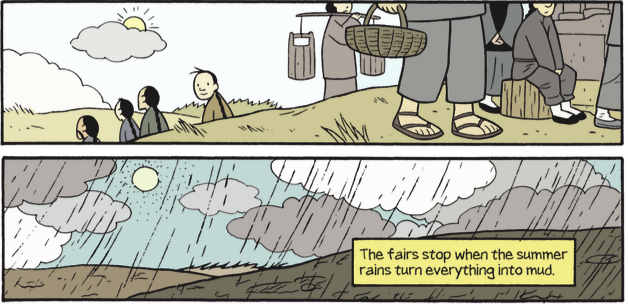 TW: Throughout your work, I find similar young adult themes of identity and culture. Do you return to these themes on purpose?
TW: Throughout your work, I find similar young adult themes of identity and culture. Do you return to these themes on purpose?
GY: Every writer has themes they return to again and again, and often they come out of childhood experiences: how we found our place in the world when we were young. When I was a kid, my cultural heritage was something I struggled with, learned from, pushed against—all the different relationships one person can have with one culture. That’s how almost all writers that I know work: We pull from our own deep well.
For example: In 2000, Pope John Paul II canonized a group of Roman Catholic saints killed during the Boxer Rebellion. Canonization is the way the Catholic Church points out particular lives as exemplary, and my home church kind of flipped out about it. It’s the first time the Western church had recognized this in some way.
It mirrored something I became increasingly aware of as I got older. I grew up in that church, and anytime people were talking about Jesus, they were doing it in Chinese. As a kid, I never experienced any sort of tension between my cultural identity and the faith tradition I was raised in. But historically, that’s not the case at all—there’s a lot of tension. It leads me to question how we, as human beings, define ourselves, especially in complex societies in different communities that don’t overlap easily. That whole period of China’s history—that century of humiliation—is incredibly fascinating. I think there’s a lot everyone can learn from that period, including those of us who grew up in the West.
TW: You’ve mentioned it in past interviews, but speaking of finding yourself—talk to me about finding your own Catholicism in college.
GY: Faith isn’t the same thing as an ethnic identity; it isn’t something you can get away from. All of us have to choose whether or not we want to be a part of the tradition we grew up in, another one, or no tradition at all. I had to work that out in college when I was away from my parents and my home church, and to struggle with what I believed to be reality and the good and bad parts of my faith community. So, I came out of it choosing—with a lot more doubt—but also realizing that doubt is a part of maturity in choosing to belong to the faith I was raised in.
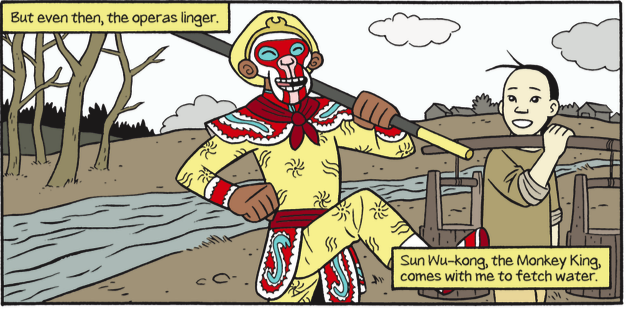
TW: As a writer for teens, do you find yourself tackling the same issues you struggled with?
GY: Yes. YA author Marsha Qualey says that at the heart of all young adult literature is this equation: belonging + power = identity. That expresses a lot of what interests me and what fascinates me about humans—how we deal with power, how we find belonging, and how that feeds into the way we see ourselves. We struggle most intensely with those questions during our teenage years, when we leave our family and strike out on our own. My interests overlap with that particular time period in a human life—and the demographic category where those stories fit is young adult. It makes sense to me to be in that category.
TW: Do you feel like you’re searching for your own identity?
GY: Every creator constantly tries to improve. That’s one of the reasons I wanted to teach at Hamline. During the week-long residencies when I teach, I get to hang out with the faculty, who are all published authors, working in different parts of the book industry. Hamline forces me to articulate things I believe about writing. Students in the master's program go through one residency each about thought, character, setting, and theme—the four big pieces. The one this summer was about theme, and because I have never had to articulate what I believe about writing theme, prepping for my lecture during this residency forced me to do that.
Something happens in the same way when I write my own comics—by forcing myself to write about identity, power, and belonging. By assigning words and images to them, they crystallize, and it helps me as a person.
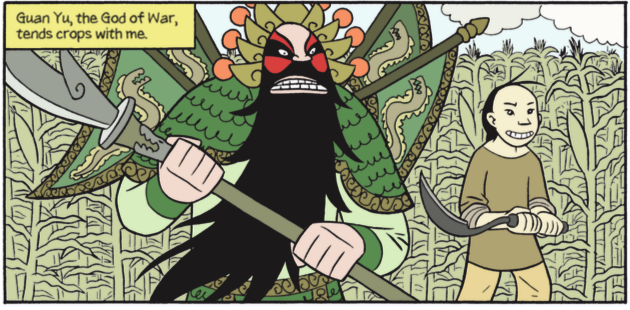
TW: You write about classic topics that young adult readers face. Do you think about the fact that your audience may be learning how to handle these problems from your books?
GY: My primary goal is just to get readers to finish the book, to get them to turn all the pages and go to the end. There are things inside a book the author may not even be conscious of or that are the collective unconscious speaking through a work. The meaning of the work is really a collaboration between author and reader.
TW: You completed a book tour for Boxers and Saints in October 2013. Who was there, how old were they, and who asked you questions?
GY: I did some conferences with teachers and librarians and some school visits—all high schools, I think. I did some bookstore events. It was a mix in terms of age. For the most part, the response was positive. People liked the fact that there were two books, one from each side of the conflict. A thoughtful question is one of the best things you can ask for as an author. You get responses from almost everybody. At a couple of schools I visited, multiple classes were asked to read Boxers and Saints. Those were the best.
TW: How does it feel to have your books be assigned reading?
GY: When I was a kid, I hated assigned reading. I was assigned To Kill a Mockingbird in seventh grade and hated it. Now, it’s one of my favorite books. I wonder if that happens to some of the kids with my books. I have to say, at least a certain percentage have come up to me and said, “Even though this was assigned, I loved it.”
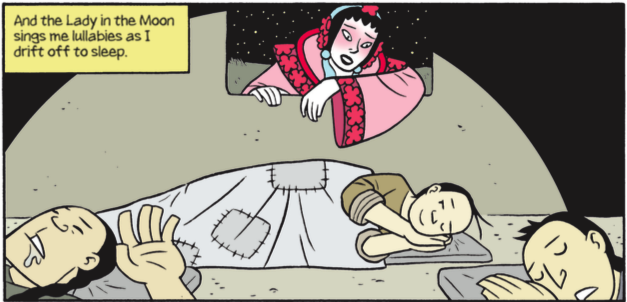
TW: At least your books come with cool pictures! In that vein, you got to work on the Avatar book series. How was that?
GY: A friend of mine loaned me the first season on DVD and said, “This is, like, the best show ever.” I thought, “How good could it be? It’s from Nickelodeon.” But the topics they tackled, the way they tackled them, were stunning. To get the chance to play in that world was awesome. [Editor’s Note: The three seasons of Avatar: The Last Airbender originally aired on Nickelodeon from 2005 to 2008.]
TW: Let’s switch gears to Secret Coders. The main characters are younger than those in your other work.
GY: In Boxers and Saints, my characters started younger and ended up teenagers. In Secret Coders, I was really excited about combining being a cartoonist with being a teacher. I also want to blend the didactic and the narrative. In society nowadays, there’s this artificial divide between things considered left- or right-brained. In this book, one of the underlying philosophical questions I tackle is whether or not there’s a difference between human beings and computers.
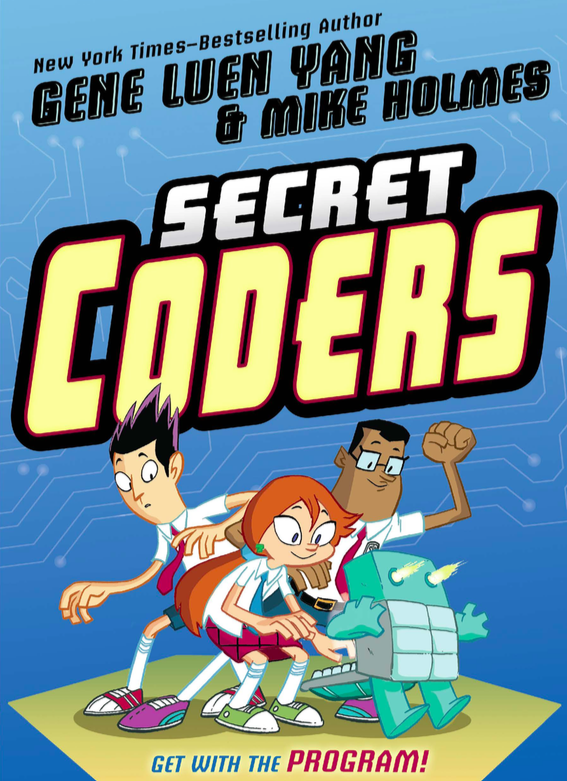
There’s something historical underlying Secret Coders, too. The language I used in the book is called Logo, which was created by a team of computer scientists in the ‘60s. Logo is the first computer language I learned when I was in the fifth grade, so I have a lot of nostalgia for it. It was created by this guy named Seymour Papert, who is kind of a genius. He isn’t just a computer scientist. He wrote a book called Mindstorms: Children, Computers, and Powerful Ideas [the first edition was published in 1980], and Logo is an implementation of his education theories. The book was so influential that Lego hired him. Mindstorms, the Lego product, is based on his book.
TW: Did your mother have any comments about Secret Coders or your going into comics? There seem to be definite overlaps between the mother in the book and notes about your own.
GY: My mother was fairly supportive and more supportive than my dad, who was more “you need to do something practical like be a doctor or a lawyer.” Mom understood why I liked these things.
TW: One of your other recent works, The Shadow Hero, looks at young adult literature from a different angle. Where did it start?
GY: It started on Pappy’s Golden Age Comics Blogzine. The writer highlights obscure characters from old comics. In one post a few years ago, he highlighted the Green Turtle, a 1940s character rumored to be the first Asian American superhero and possibly created by one of the first Chinese Americans to work in the comic-book industry. The Green Turtle never got an origin story; he only lasted five issues. There are only about forty pages of original Green Turtle comics.
TW: There’s an irony in the origin story you’ve created with artist Sonny Liew. Unlike some children who want to be superheroes when they grow up, your character Hank is almost forced by his mother to become the Green Turtle! Is the mother in The Shadow Hero modeled after your own mom?
GY: Hank’s mom is modeled after some of the ladies I knew at church when I was growing up. Some of these ladies were very well meaning, they always wanted the best for you, but they were always sure they knew what you had to do in order to become better than who you were at the time. They were very free with advice and very opinionated, and the mom in The Shadow Hero is definitely a composite of them.
TW: Who else occupies this space of graphic novels as YA literature?
GY: Mariko and Jillian Tamaki. This One Summer (First Second, 2014) is a 2015 Printz Honor Book, and they were the first graphic novelists ever to be Caldecott honorees. Their book is absolutely stunning, about these two girls who go to the same vacation community every year with their families and the summer when they start becoming adults. It won all three major comic-book industry awards.
Blankets (Top Shelf, 2003) by Craig Thompson is a seminal book. I don’t think people thought about “YA graphic novels” when it came out, but it established that space. There’s also Andre the Giant: Life and Legend (First Second, 2014) by Box Brown.
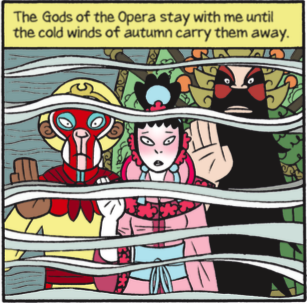 TW: Do you feel the book industry is primed for more YA graphic novels?
TW: Do you feel the book industry is primed for more YA graphic novels?
GY: More and more teachers, librarians, and parents are taking them seriously. I don’t see that ending at all. The boundary between the book market and the comic-book market—that boundary is disintegrating. There are actually books nowadays I’m not sure how to categorize.
TW: Do you think you'll stick to graphic novels as a medium?
GY: I feel most comfortable in this intersection between images and text. There’s a saying: The reason why he’s a cartoonist is because he uses images to mask his inadequacy in writing and words to mask his inadequacy in drawing. My first love is comics, but I’m not opposed to exploring the other stuff—animated video, live action. Comics in general give the creator more control, and I like that.
Don’t miss “Gene Yang: ‘I Prefer the Term Comic Book,’" the first TW interview (December 2010) by William Gray with this award-winning author and artist.
Art Information
- All panels that appear here from Boxers and Saints provided courtesy of Gene Luen Yang and First Second Books; used by permission only.
Publishing Information
- “2007 Printz Award: American Born Chinese,” Young Adult Library Services Association (YALSA).
- “Number 221: The Green Turtle,” Pappy’s Golden Age Comics Blogzine, November 20, 2007.
- “This One Summer,” description and awards list on Jillian Tamaki’s website.
